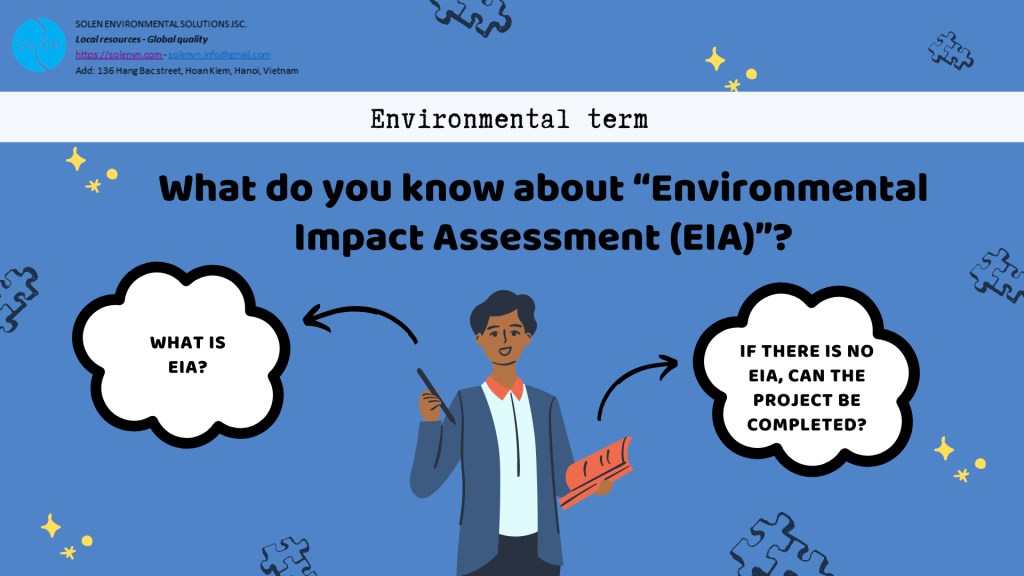1. What is Environmental Impact Assessment (EIA)?
– Environmental impact assessment is the process of analyzing, evaluating, identifying, and forecasting the environmental impact of an investment project and taking measures to minimize adverse impacts on the environment. (According to the Law on Environmental Protection 2020).
– In the aspect directly related to the project, EIA is a decisive tool for project investment and sustainable development.
2. The Source of Environmental Impact Assessment (EIA).
Environmental impact assessments were started in the 1960s to raise public awareness of environmental issues. Environmental impact assessment is related to technical assessment to contribute to more objective decision-making. In the United States, environmental impact assessments gained official status in 1969, with the enactment of the National Environmental Policy Act. EIA is an activity carried out to find out the possible impacts before the project implementation, through which all possible risks can be anticipated, as a basis for making decisions for investors or investors. competent authority.
3. What is the meaning of Environmental Impact Assessment (EIA)?
– EIA is an important environmental management tool. But it is not intended to eliminate, eliminate or cause difficulties for socio-economic development as many people mistakenly believe, but to support development to ensure economic efficiency and environmental protection. Thus it contributes to the goal of sustainable development. This is demonstrated by the following specific points:
- EIA encourages Better Planning and makes projects more efficient.
- EIA can save time and money in long-term development. Through integrated environmental factors, which are considered in the decision-making process at the planning stage of establishments, localities, and the Government, unnecessary costs and wrong activities can be avoided. mistakes whose consequences must be remedied very expensively in the future.
- EIA helps the State, facilities, and communities to have a closer relationship. The community’s contributions before the project is invested, ensuring investment efficiency is improved, and contributing to the development of common prosperity in the future. Through the recommendations of the EIA, the use of resources will be more prudent and reduce the threat of environmental degradation to human health and ecosystems.
– The EIA does not consider projects individually but places them in the general development trend of the region, the country, and the whole world. When evaluating a particular project, always consider additional projects and alternatives, that is, consider projects that may give the same output, but have different technologies or are located in different locations. other. Moreover, in each area, there is always a “background” environmental quality, which when placing a project, needs to be carefully considered to avoid causing high-level cumulative harm to an area.
– EIA mobilizes the contributions of a large number of classes in society. It contributes to improving the responsibility of management agencies and project owners for environmental protection. At the same time, EIA connects scientists in different fields to solve the common task of assessing the environmental impact of projects, helping decision-makers choose the right project for the project. environmental protection target. The EIA also promotes the publicity of project formulation and implementation and the community’s awareness of participating in EIA in particular and environmental protection in general.
– EIA also helps to combine environmental protection activities in the long run. All impacts are taken into account not only in terms of extent but also in terms of cumulative capacity, ability to persist over time. Given the fact that many issues that were overlooked in the past have had a detrimental impact on the present and the future, many high-risk activities have occurred that require careful consideration.

REFERENCE LIST:
[1] The Law on Environmental Protection 2020; [2] World Health Organization, Geneva, 1993.


 Tiếng Việt
Tiếng Việt 日本語
日本語